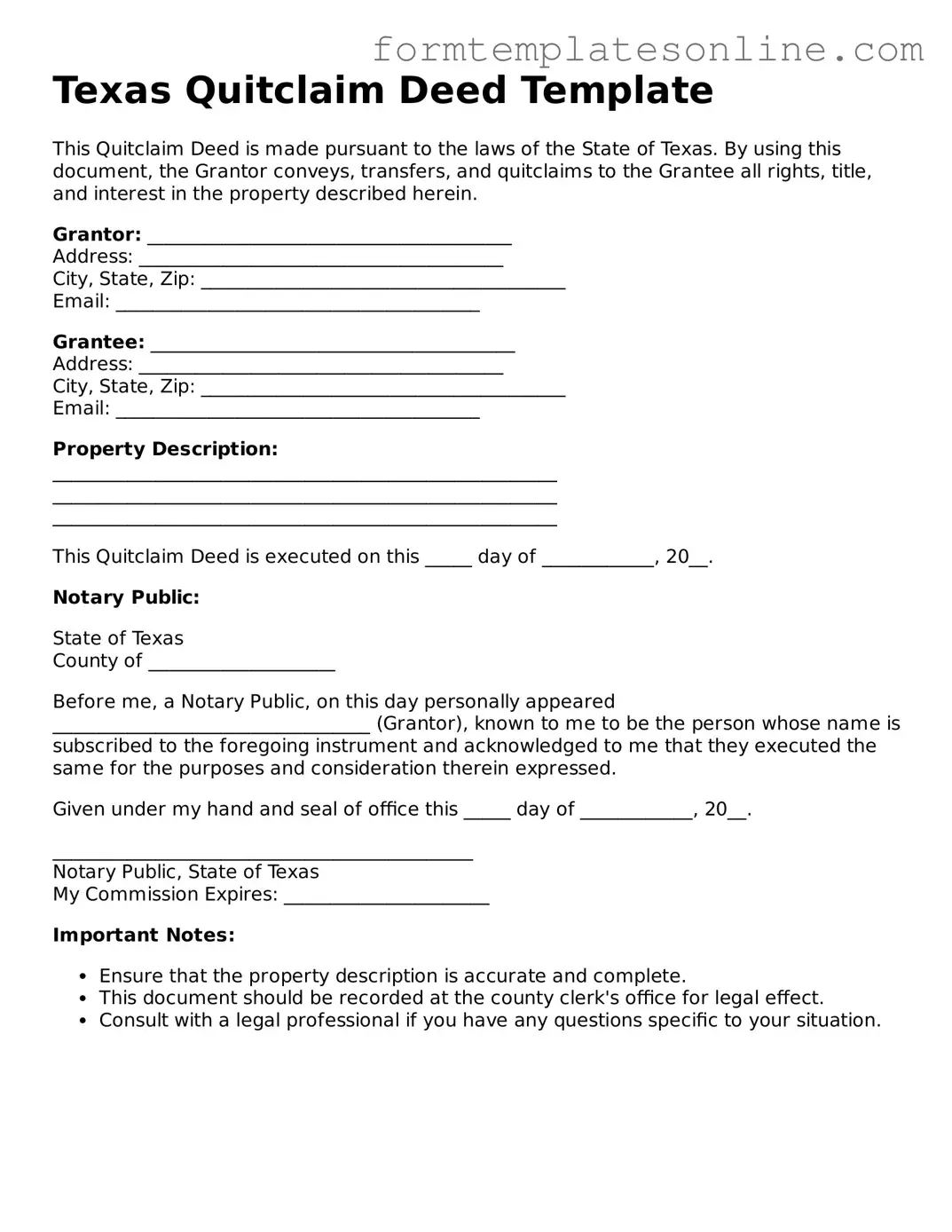Texas Quitclaim Deed Template
This Quitclaim Deed is made pursuant to the laws of the State of Texas. By using this document, the Grantor conveys, transfers, and quitclaims to the Grantee all rights, title, and interest in the property described herein.
Grantor: _______________________________________
Address: _______________________________________
City, State, Zip: _______________________________________
Email: _______________________________________
Grantee: _______________________________________
Address: _______________________________________
City, State, Zip: _______________________________________
Email: _______________________________________
Property Description:
______________________________________________________
______________________________________________________
______________________________________________________
This Quitclaim Deed is executed on this _____ day of ____________, 20__.
Notary Public:
State of Texas
County of ____________________
Before me, a Notary Public, on this day personally appeared __________________________________ (Grantor), known to me to be the person whose name is subscribed to the foregoing instrument and acknowledged to me that they executed the same for the purposes and consideration therein expressed.
Given under my hand and seal of office this _____ day of ____________, 20__.
_____________________________________________
Notary Public, State of Texas
My Commission Expires: ______________________
Important Notes:
- Ensure that the property description is accurate and complete.
- This document should be recorded at the county clerk's office for legal effect.
- Consult with a legal professional if you have any questions specific to your situation.
